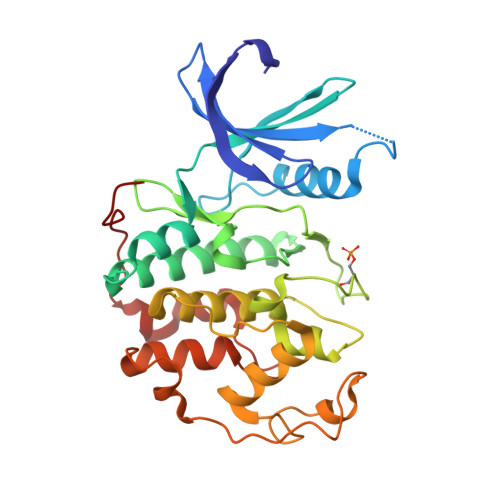Halogen bonds form the basis for selective P-TEFb inhibition by DRB
Baumli, S., Endicott, J.A., Johnson, L.N.(2010) Chem Biol 17: 931-936
- PubMed: 20851342
- DOI: https://doi.org/10.1016/j.chembiol.2010.07.012
- Primary Citation of Related Structures:
3MY1, 3MY5 - PubMed Abstract:
Cdk9, the kinase of the positive transcription elongation factor b, is required for processive transcription elongation by RNA polymerase II. Cdk9 inhibition contributes to the anticancer activity of many Cdk inhibitors under clinical investigation and hence there is interest in selective Cdk9 inhibitors. DRB (5,6-dichlorobenzimidazone-1-β-D-ribofuranoside) is a commonly used reagent for Cdk9 inhibition in cell biology studies. The crystal structures of Cdk9 and Cdk2 in complex with DRB reported here describe the molecular basis for the DRB selectivity toward Cdk9. The DRB chlorine atoms form halogen bonds that are specific for the Cdk9 kinase hinge region. Kinetic and thermodynamic experiments validate the structural findings and implicate the C-terminal residues of Cdk9 in contributing to the affinity for DRB. These results open the possibility to exploit halogen atoms in inhibitor design to specifically target Cdk9.
- Department of Biochemistry/Laboratory of Molecular Biophysics, University of Oxford, UK. Sonja.baumli@bioch.ox.ac.uk
Organizational Affiliation:





















